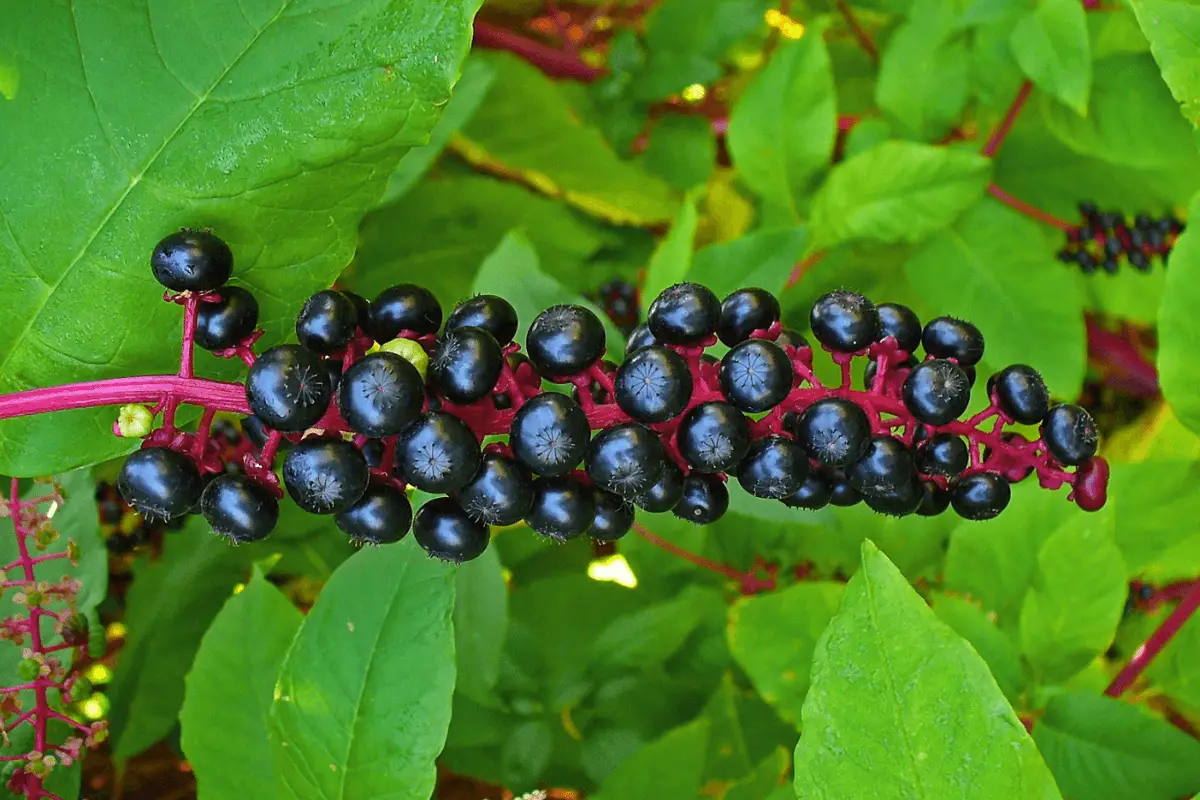TheHerbProf.com is a treasure trove of knowledge for those interested in natural healing and herbal remedies. The website is run by Paul Johnston MD. A naturopathic who has not only received extensive education in the field but also has personal experience in self-healing.
Plytolacca Decandra
Poke Root is an American perennial shrub that grows in damp woodlands, hedges, and waste places, especially in the South. The parts of this plant used medicinally are the roots and the berries. The genus name, Phytolacca, is derived from the Greek word, phyton, meaning “plant.” The English name, Poke, is said to be derived from an Indian word, pocan, a name for any plant that yields a red dye, and from pak, meaning “blood.”
The Indians of Connecticut used the berries to stain splint baskets a dark blue. Indeed, poke provided one of the first natural inks used by settlers of the New World. It proved so enduring that it can still be seen in documents in museums. Pokeroot is used today as a base for fabric dye.
Poke Alcohol-Free Liquid Extract – Get Yours Here.
Indians of the eastern states used a poultice of powdered pokeroot to treat tumors and skin eruptions, and the colonists followed their example. It was believed that the plant’s highly potent qualities were responsible for its medicinal effect. The Delaware Indians ingested the root as a rheumatism cure. A salve for sores was made by combining roasted poke root, bittersweet, yellow parilla, and elderberry bark to a base of boiled lard and beeswax.
The herb comes from the root of the poke plant. It has cleansing and healing qualities that will affect the whole body. Poke root is a powerful emetic and purgative. Poke root is very potent and should not be taken more than one teaspoon three times daily. An overdose will cause vomiting and diarrhea.
Poke Root Wildcrafted Cut & Sifted – Get Yours Here.
Poke is considered by herbalists as one of the best blood cleansing and lymphatic purifying herbs. It is excellent for the treatment of cancer, tumors, arthritis, and degenerative diseases. But should be used with respect and preferably in combination with other herbs in a formula to offset its powerful detoxifying effects. Externally it is applied as a poultice for sores and boils and to relieve difficult urination when used over the bladder. Poke root is helpful in treating rheumatism, tonsillitis, mumps, lymphatic swelling, laryngitis, thyroid glands, spleen, and liver enlargement.
The primary chemical constituents of Poke Root include triterpenoid saponins, alkaloids (phytolaccine), phytolaccic acid, formic acid, lectins, tannin, antiviral protein (PAP), fatty oil, resin, and sugars. The alkaloid constituents are fundamentally nitrogen-containing molecules that are thought to have a marked effect on both animal and human physiology in varying roles. From pain suppression to poisoning. Moreover, the tannins have the effect of precipitating protein molecules, producing a sort of “leather coat” on the surface of tissues. Poke Root is broadly described as an alternative, purgative, and emetic. Little documented evidence exists as to the specific beneficial role of the phytolaccic acid.
Poke Root Powder – Get Yours Here.
Poke root makes a good poultice for breast tumors and caked breasts. The poultice should be made by grinding the root into a powder and mixing it with slippery elm and water. Apply to the swellings and remoisten it when it dries. Keep the poultice on all day and change it every three days.
A poultice of the berries has been used on boils, ringworm, scabies, and wounds, as well as a salve for bedsores, carbuncles, chickenpox, eczema, fungal infection, hemorrhoids, herpes, measles, psoriasis, and shingles.
Contraindications:
Pregnant and nursing women should avoid Pokeweed. Great care should be taken with the use of this herb since it is very potent in its actions. It should be used only in small amounts and under the care of a knowledgeable healthcare provider.
Linking Poke Root to TheHerbProf.com
Poke Root is a potent herb with a rich history of medicinal use, and at TheHerbProf.com, we’re all about celebrating these herbal wonders! Here’s how our website and this subject harmonize:
- Poke Root Prose: We provide comprehensive information about poke root, its medicinal properties, and its uses in herbal medicine.
- Herbal Highlights: Our site offers insights into how poke root can be incorporated into your herbal regimen.
- Safety Measures: We guide you on how to use poke root safely and effectively.
- Health and Wellness: Our focus is on promoting overall health and wellness, and poke root plays a crucial role in this.
- Community Connection: Connect with others who are interested in poke root and share your experiences.
So, whether you’re a poke root enthusiast or just starting your herbal journey, TheHerbProf.com is your trusted guide. Remember, stay curious and stay healthy!
References:
Little Herb Encyclopedia, by Jack Ritchason; N.D., Woodland Publishing Incorporated, 1995
The Ultimate Healing System, Course Manual, Copyright 1985, Don Lepore
Planetary Herbology, Michael Tierra, C.A., N.D., Lotus Press, 1988
Handbook of Medicinal Herbs, by James A. Duke, Pub. CRP Second Edition 2007
The Complete Medicinal Herbal, by Penelope Ody, Published by Dorling Kindersley


